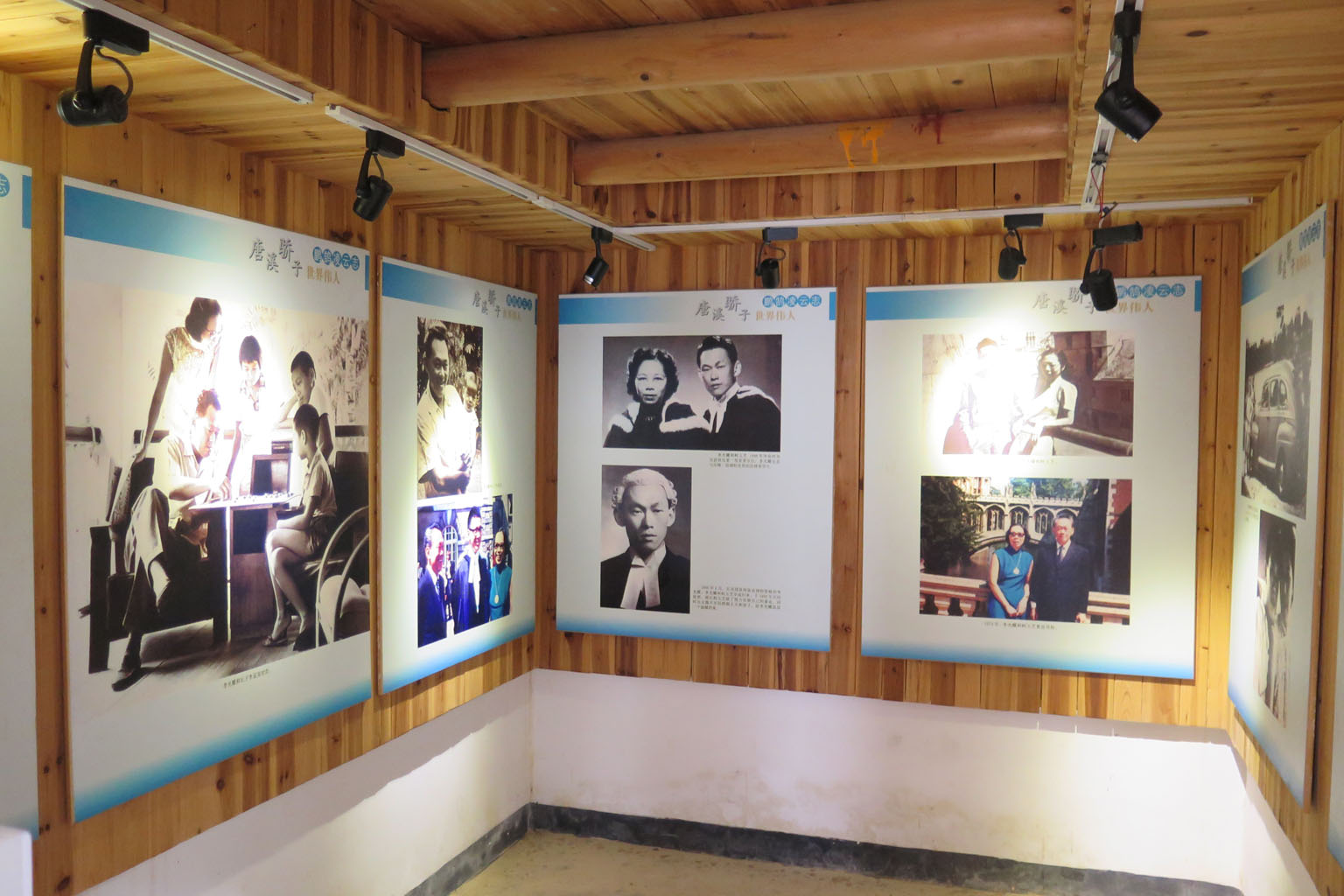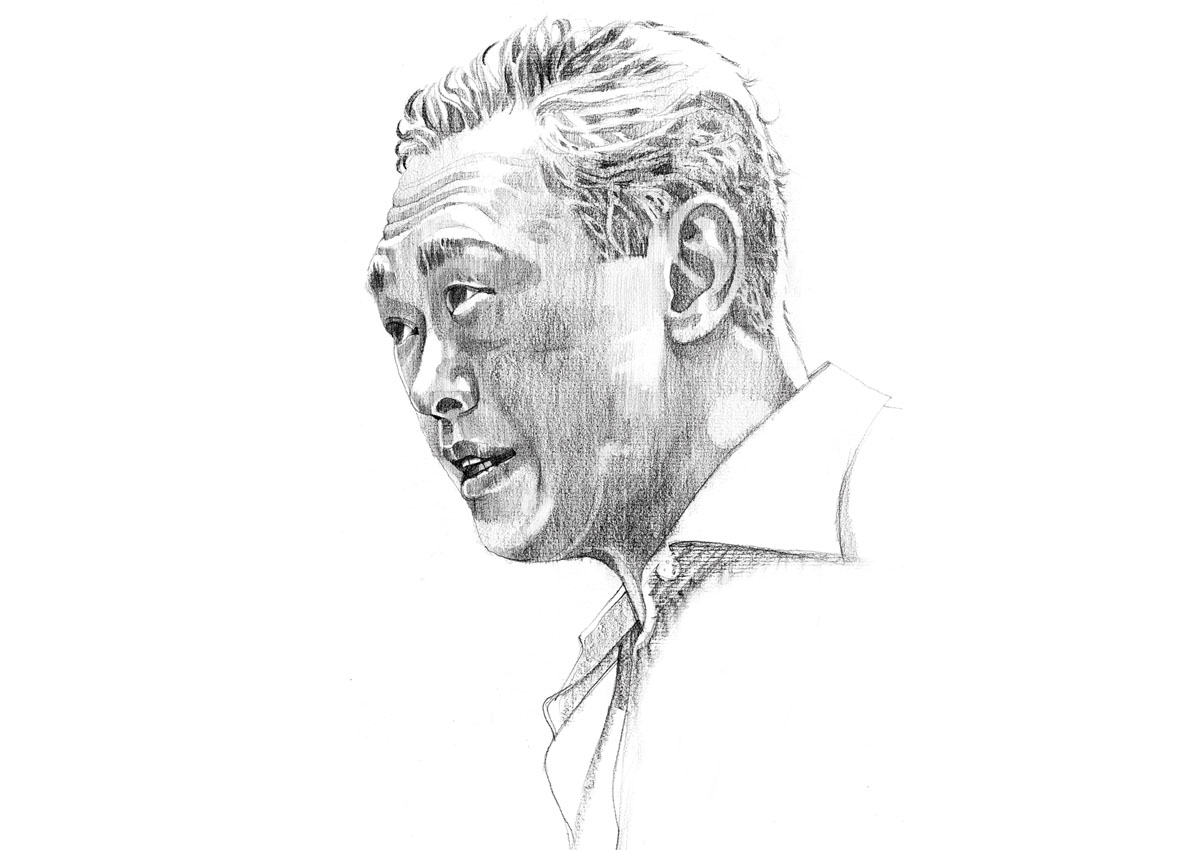It is hard to miss the Chinese characters “Tangxi jiaozi, shijie weiren” emblazoned in red on a wooden panel in the main hall of the traditional brick-and-wood, Hakka-style residence with its dusty yellow outer walls and sloping grey-tiled roof.
The phrase, which means “the pride of Tangxi, a great man of the world”, takes centre stage in the ancestral home of Singapore’s founding Prime Minister Lee Kuan Yew in the tiny village of Tangxi in southern Guangdong province’s Dabu county.
Today, on the first anniversary of his death at age 91 on March 23 last year, villagers keen to pay their respects will be able to do so. A portrait of Mr Lee will be placed in the spacious main hall and there will be the lighting of incense to honour and commemorate him.
“It’s our simple way of remembering a great man. The fact that a world-renowned person is from Tangxi is a source of much pride for us. It’s also a precious resource,” said Mr Li Gang, 53, a Shenzhen-based businessman originally from Tangxi who is involved with various aspects of the village’s development.
Many villagers, including retiree Li Wenying, 77, are eager to take part in memorial activities to remember a man who, they say, has put their village on the world map.
“Everyone in Tangxi is proud of him. We follow news of Singapore and know how well it’s governed, especially how well Mr Lee had run the country and ensured its clean governance,” he said.
Last year, when news of Mr Lee’s death reached Tangxi – which falls administratively under a larger village called Dangxi in Meizhou city – more than 1,000 mourners visited the house, also known as Zhonghandi, to pay their last respects with the lighting of incense and offerings of candy and rice wine.
Mr Lee’s cousin, Mr Li Fensen, who now lives in Shenzhen, was among them.
Tangxi’s villagers, most of whom share the surname Li, also held local funeral rites for Mr Lee, including the burning of paper money at the entrance of Zhonghandi in the belief that this will allow his soul to return home.

Mr Lee’s great-grandfather, Li Muwen, built the ancestral home in 1884 with money he had earned working in Singapore.
It was Mr Lee’s Hakka great- grandfather, Li Muwen, who built the ancestral home set against lush green mountains in 1884 with money he had earned working in Singapore. His grave is marked by a tombstone a short climb up the hill behind the home.
But while Mr Lee never set foot in either the 180 sq m house or Tangxi village, both places have inextricably tied their name with his.
Since 2008, the local authorities have turned the eight-room building into an exhibition of Mr Lee’s life and accomplishments.
There are pictures and write-ups of his time as a student in Britain, his family and political life, diplomatic accomplishments, and a detailed family genealogy. The house was declared a city-level cultural protection site in 2014.

Mr Lee’s ancestral home, a 180 sq m, eight-room building set against lush green mountains, has been turned into an exhibition of his life and accomplishments.
More recently, the county government splashed more than 30 million yuan (S$6.3 million) in the first phase of plans to develop Tangxi – which has only about 100 residents – into a rural tourist site known as “Lee Kuan Yew’s Homeplace”.
Not only are there multiple signs throughout the village harking back to Mr Lee’s ancestry, but a man- made lake, surrounded by Chinese-style pavilions, has also been built, together with a two-storey memorial hall that opened last October.
Consisting of four multimedia exhibition halls, the memorial hall includes information on Mr Lee’s key role in establishing China-Singapore ties and his contribution in the city state’s nation-building efforts.
There are, for instance, videos from his parliamentary speeches on bilingualism, and pictures of his meetings with all of China’s five leaders, from Mao Zedong to current President Xi Jinping.
There are also life-sized rubber sculptures of Mr Lee and his wife, Madam Kwa Geok Choo, who died in 2010.

One of the rooms in Mr Lee’s ancestral home. There are pictures and write-ups of his time as a student in Britain, his family and political life, his diplomatic achievements and his family genealogy.
Dangxi party secretary He Jia- xing, 58, told The Straits Times that affection for Mr Lee runs deep in the village despite the fact that the late leader never paid a visit.
“Singapore and China only established diplomatic ties in 1986 and so before that, it would have been inconvenient to visit considering the circumstances… He was also running a country and would have been very busy,” he said.
“We are still immensely proud that a world leader has come from our village and have a lot of respect for him.”
More than 300,000 ethnic Hakka people live in Singapore, and about 70 per cent were originally from Dabu, according to the county’s overseas Chinese affairs bureau, said a Xinhua news agency report.
While the site does not charge an entrance fee currently, there are plans to do so in the future – a move that will likely give the village’s economy a boost and defray the cost of running the site.
There are also plans for a second development phase, although that will depend on the go-ahead from county and city officials higher up.
Already, more than 20,000 tourists, including foreigners, visit Tangxi every month during peak periods such as national holidays, Mr He said. Many of them are on self-drive holidays.
One such tourist, Mr Guo Zhenzhong, 35, who visited the village with his family last week when The Straits Times was there, said they decided to make a detour to Tangxi while on a trip back to Meizhou to pay respects to their ancestors. They had driven two hours from Chaozhou city, also in Guangdong province.
“We wanted to stop by Tangxi because we feel a sense of affinity with Mr Lee, our ancestors also being from the Meizhou area. It’s an honour for us to have some sort of connection with him,” he said.
esthert@sph.com.sg

This article was first published on March 23, 2016.
Get a copy of The Straits Times or go to straitstimes.com for more stories.







